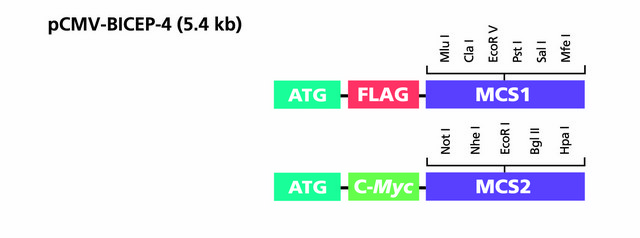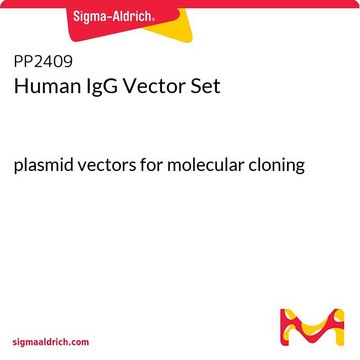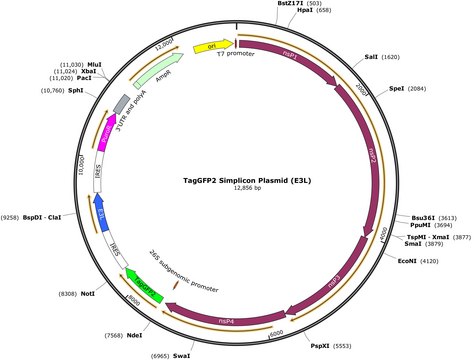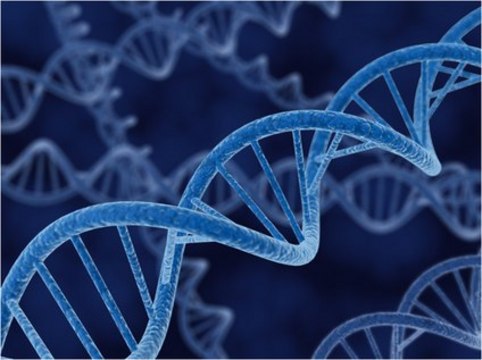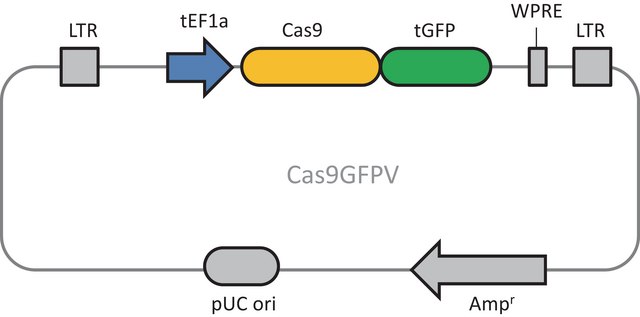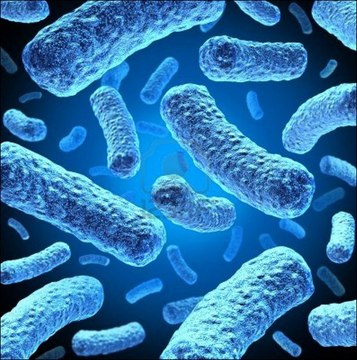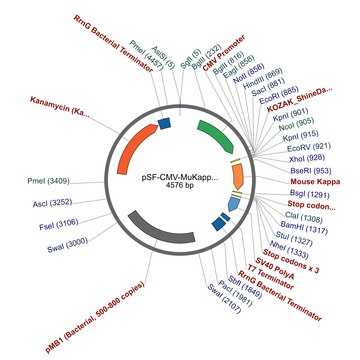PP2410
Mouse IgG Vector Set
plasmid vectors for molecular cloning
Synonym(s):
cloning vector, expression vector, molecular cloning vector, plasmid, plasmid vector, snapfast vector, vector
About This Item
Recommended Products
form
buffered aqueous solution
bacteria selection
kanamycin
Origin of replication
pUC (500 copies)
Promoter
Promoter name: CMV
Promoter activity: constitutive
Promoter type: mammalian
shipped in
ambient
storage temp.
−20°C
General description
This pack enables you to engineer monoclonal expression of your chosen mouse antibody. The plasmids encode the constant regions of mouse IgG1 heavy chain and of both lambda and kappa light chains, providing a framework for you to insert the variable regions of your choice.This plasmid set has been designed to be compatible with a range of cloning techniques. The multiple cloning site contains a range of standard commonly used restriction sites for cloning. Using these sites genes can be inserted using standard cloning methods with DNA ligase. Other methods such as ligase independent cloning (LIC) Gibson Assembly InFusionHD or Seamless GeneArt can also be used and because all of our plasmids are based on the same backbone the same method can be used for cloning into all of our catalogue vectors.
Multiple cloning site notes: There are a few important sites within the MCS. These include the NcoI site the XbaI site and the BsgI and BseRI sites. The NcoI site contains a start codon that is immediately downstream of both a Kozak and Shine-Dalgarno ribosomal binding site. These allow for optimal positioning of genes when the start codon is placed in this location. If this is not required and you wish to use a downstream site for gene cloning you can remove the NcoI site by cleaving the plasmid with KpnI. The XbaI site contains a stop codon. This stop codon is positioned in a specific position in relation to the BsgI and BseRI sites that are immediately downstream. When either BseRI or BsgI cleave the plasmid they produce a TA overhang from the stop codon in the XbaI site that is compatible with all of our peptide tag plasmids cut with the same sites. BseRI and BsgI sites are non-palindromic and cleave a defined number of bases away from their binding site. Whenever we clone a gene into our multiple cloning site we always position the start and stop codon in the same positions in the MCS. If the start and ends of the genes are not compatible with NcoI and XbaI we extend the sequence to the nearest external sites but keep the start and stop codons locations consistent.
Transcription Termination: These plasmids contains three alternative transcription terminators for mammalian bacterial and bacteriophage (T7) expression. This means that only the promoter needs to be changed to alter the expression system you are using. We sell multiple promoters that can be used in each of these systems. The presence of each terminator does not reduce expression in the alternative systems.
Sequence
Analysis Note
Legal Information
Kit Components Also Available Separately
- PSF-CMV-MULAMBDA - MOUSE LAMBDA LIGHT CHAIN ANTIBODY VECTOR, plasmid vector for molecular cloning
- OGS568PSF-CMV-MUKAPPA - MOUSE KAPPA LIGHT CHAIN ANTIBODY PLASMID, plasmid vector for molecular cloningSDS
- OGS569PSF-CMV-MUIGG1 - MOUSE IGG1 HEAVY CHAIN ANTIBODY PLASMID, plasmid vector for molecular cloningSDS
related product
Storage Class Code
12 - Non Combustible Liquids
Flash Point(F)
Not applicable
Flash Point(C)
Not applicable
Regulatory Information
Choose from one of the most recent versions:
Certificates of Analysis (COA)
It looks like we've run into a problem, but you can still download Certificates of Analysis from our Documents section.
If you need assistance, please contact Customer Support.
Already Own This Product?
Find documentation for the products that you have recently purchased in the Document Library.
Our team of scientists has experience in all areas of research including Life Science, Material Science, Chemical Synthesis, Chromatography, Analytical and many others.
Contact Technical Service